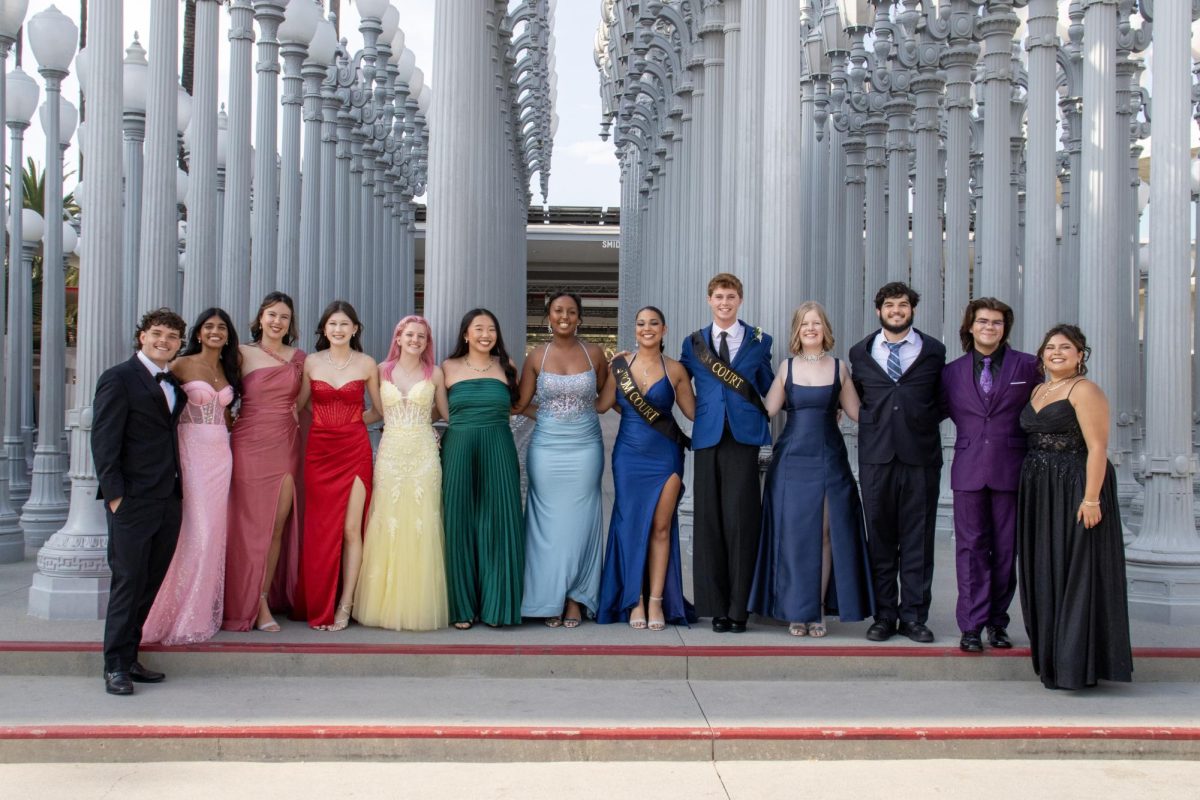What You Need to Know About California’s Wildfires

Art/Photo by Samantha Takeda
As the California wildfires rage on, organizations including the American Red Cross work hand in hand with local fire departments to provide shelter, meals, and delivery services for those in need.
October 4, 2020
Over 8,200 wildfires, more than 4 million acres of burned land, and 31 fatalities: as 2020 brings record-breaking heat waves to California, wildfires have erupted statewide, causing thousands to evacuate. From the largest statewide wildfires, to the efforts being made by local fire departments, here’s what you should know to stay educated and aware:
- The 2020 fire season is California’s worst in history. According to Cal Fire, five of the six most widespread wildfires California has experienced over the last 89 years began in August and September of this year.
- The largest of the wildfires is the August Complex Fire, which includes the Doe Fire. It is located in Tehama, Mendocino, Humboldt, Trinity, Glenn, Colusa, and Lake Counties. Breaking state records as the largest wildfire in California history, the August Complex has torn through 985,304 acres of land – equivalent to over 745,000 football fields – burned at least 159 structures, and caused one fatality.
- A perimeter has been created around 51% of the fire in order to contain it. According to NPR, “If a fire is 100 percent contained, that means firefighters were able to complete a perimeter around it and stop it from spreading. It doesn’t mean the fire stops burning.” Unfortunately, the August Complex still rages on.
- The SCU and LNU Lightning Complex Fires are California’s third and fourth largest recorded wildfires, respectively. On Thursday, October 1, both fires were reportedly 100% contained. However, the wildfires were not contained without a fight: combined, the final counts for the wildfires amounted to over 750,000 acres of burned land and over 1,700 structures destroyed.
- Although the largest state wildfires are located in Northern and Central California, fires on a relatively local scale still remain. According to the Los Angeles Fire Department, Los Angeles County’s Bobcat Fire, which began on Sunday, September 6, is 114,963 acres in size and 84% contained. The fire is located in the Angeles National Forest, close to Los Angeles.
Ellery Sanders, a fire inspector, investigator, and public education officer from the Torrance Fire Department, explained how local firefighters have aided the fight against the Bobcat Fire. “We have sent a few strike teams up to the Bobcat Fire…[the firefighters] worked very well with other departments.”
Not only were Torrance firefighters joined by those from other states, but fighting the Bobcat Fire has united “multiple fire departments even coming from around the world: from South America and Mexico, even from Israel,” Sanders noted.
Issac Yang, Operations Division Chief of the Redondo Beach Fire Department, expressed that “in the past couple months, [the Redondo Beach Fire Department has] deployed units out of the area, we’ve gone to Alameda County… we’ve sent crews to the Creek Fire in Fresno.”
Yang also provided a breakdown of a firefighting crew’s deployment cycle. “The firefighters work a maximum of a 14-day deployment… They typically work one 24-hour work cycle followed by one 24-hour off-cycle to rehabilitate.”
The support and aid given by fire departments around the world are a testament to their dedication to the people. “If someone needs help, regardless of the nature, the fire department will always be there to provide service to mitigate emergencies… If there’s a need for emergency services, we’ll always be there,” Yang added.
In addition to firefighters on the front lines, many disaster relief organizations such as the American Red Cross are providing support for those affected by the fires in numerous ways. Zoe Jackson Delos Angeles (12), a Youth Leader and President of the American Red Cross Youth Executive Board and Co-President of the West High School American Red Cross Club, described some of the work done by local Red Cross branches in response to the Bobcat Fire: “in the local areas, like Arcadia, they have set up shelters… at these shelters, they help those who have been affected by giving them food, water, shelter, as well as any assistance they may need to recover.”
As fires continue to rage on throughout California, it is vital to remain informed and aware of local situations. Regarding disaster preparedness, Delos Angeles recommended to “build a kit, and make sure you’re prepared by checking your house to make sure it’s safe; seeing if you have a plan for any disasters that could possibly happen.”
To donate to disaster relief efforts and learn more about wildfire preparedness, visit https://www.redcross.org/about-us/our-work/disaster-relief/wildfire-relief.html.
For more information about wildfires in California, go to https://www.fire.ca.gov/incidents.





